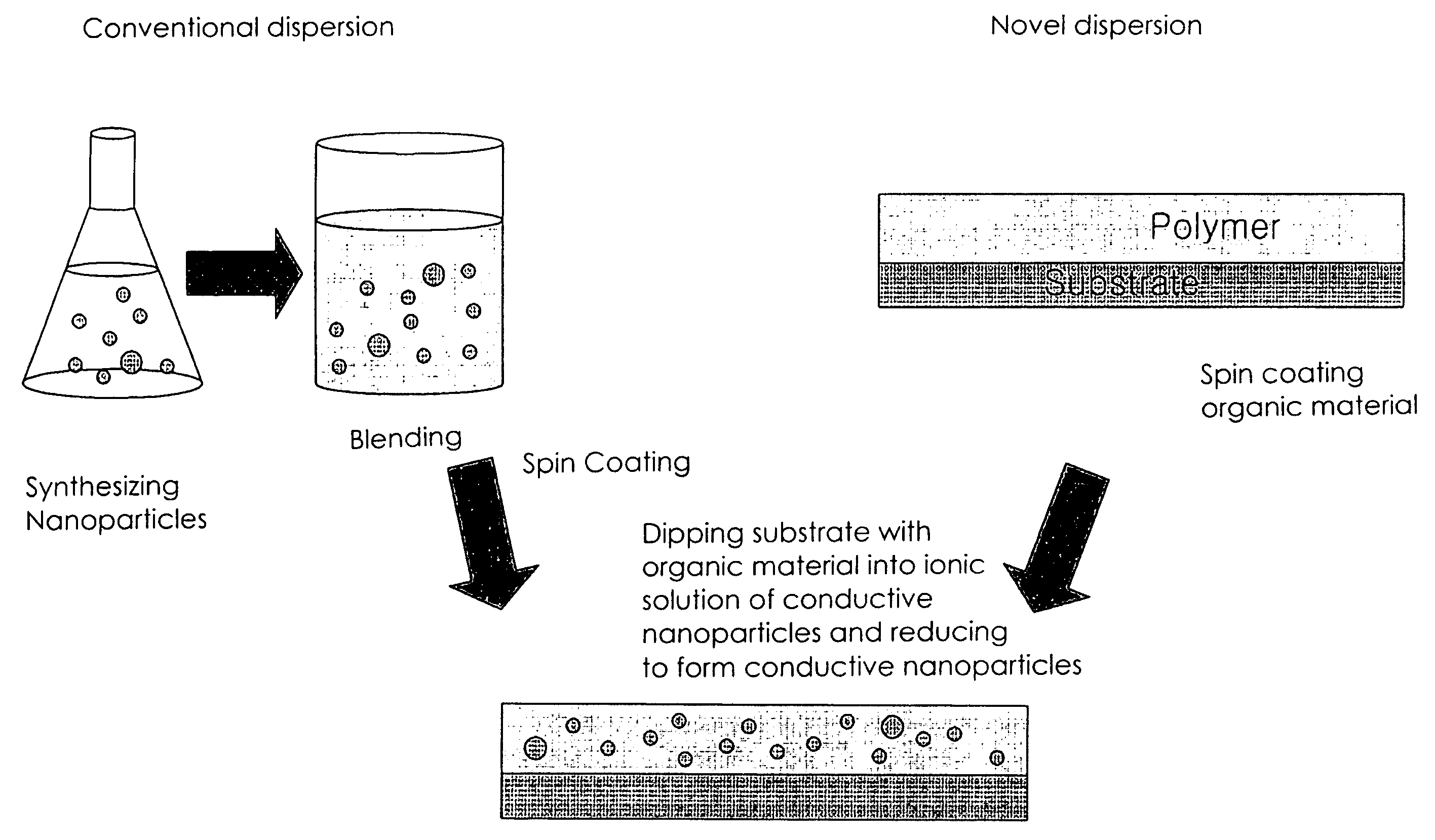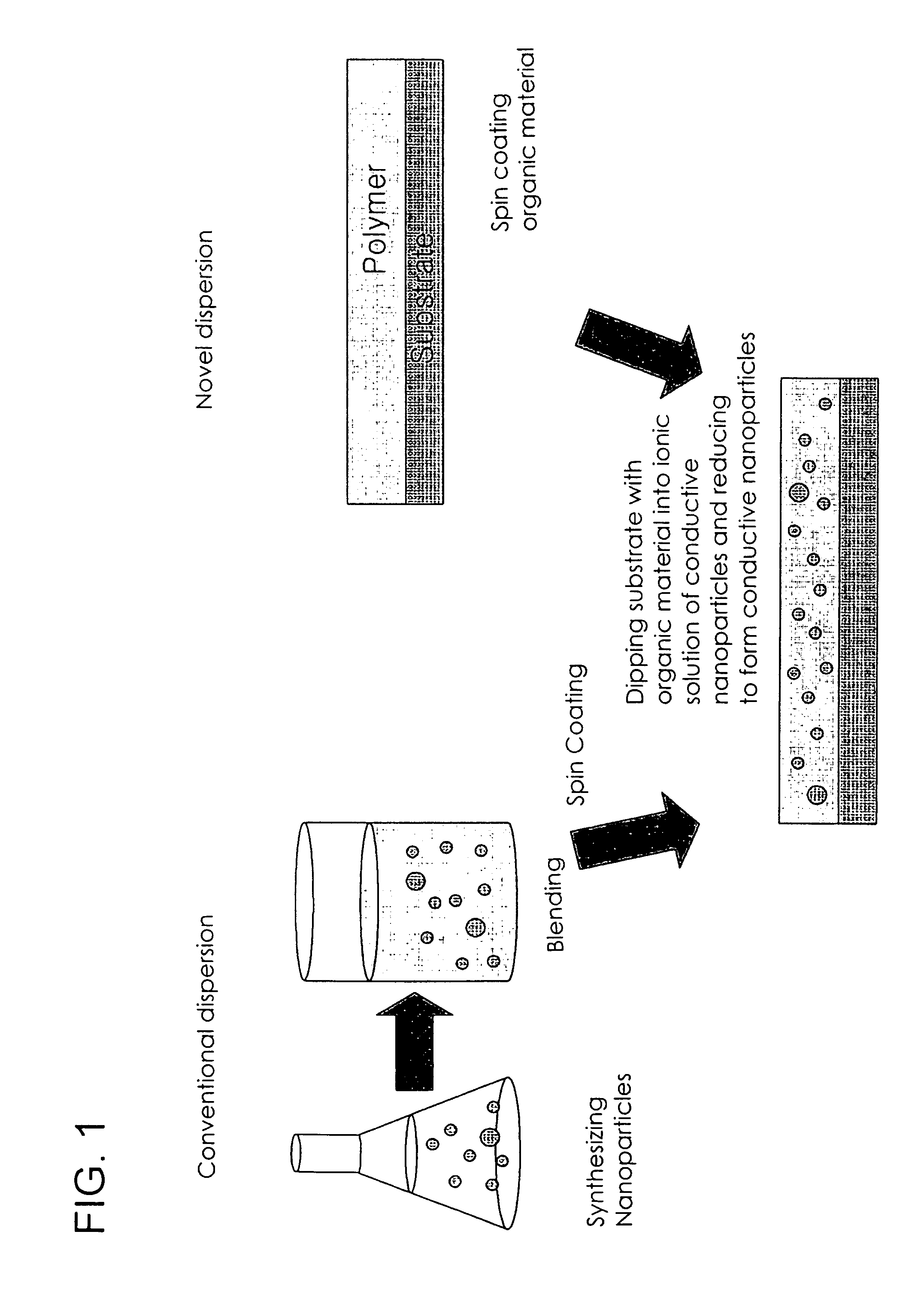Method of manufacturing nonvolatile organic memory device and nonvolatile organic memory device manufactured by the same
a nonvolatile organic memory and organic technology, applied in solid-state devices, instruments, nanoinformatics, etc., can solve the problems of high cost of memory chips, disadvantages of conventional flash memory, and increase process costs, so as to achieve rapid and uniform dispersion
- Summary
- Abstract
- Description
- Claims
- Application Information
AI Technical Summary
Benefits of technology
Problems solved by technology
Method used
Image
Examples
example 1
[0036]On a glass substrate having a lower electrode layer formed by depositing aluminum on the substrate, a solution of poly(styrene-b-vinylpyridine) (molecular weight of each block: 57,000) was spin coated and then baked at 120° C. for 20 min. The coated substrate was dipped into a 1 wt % HAuCl4 ethanol solution for about 1 min and washed several times with deionized water. Subsequently, the substrate was dipped into 1 wt % NaBH4 methanol solution for about 15 sec, washed several times with deionized water, and dried overnight at 60° C. in a vacuum atmosphere. Upon observing the surface of the dried substrate, the substrate was confirmed to be suitable for formation of another electrode layer from the result that the substrate was still flat, without being roughened by the solution. Thereafter, as an upper electrode layer, aluminum was deposited on the substrate using a thermal evaporation process, to manufacture a nonvolatile organic memory device. As such, the memory layer was 15...
example 2
[0038]On a glass substrate, aluminum was deposited using a thermal evaporation process to form a lower electrode layer, which was then spin coated with PMMA to form a 20 nm thick barrier layer. Subsequently, on the glass substrate having the barrier layer formed thereon, a solution of poly(styrene-b-vinylpyridine) (molecular weight of each block: 57,000) was spin coated and then baked at 120° C. for 20 min to form an organic material layer. The substrate coated with the organic material was dipped into a 1 wt % Au(PMe3)Me ethanol solution for about 1 min and washed several times with deionized water. Subsequently, the substrate was dipped into a 1 wt % NaBH4 methanol solution for about 15 sec, washed several times with deionized water, and dried overnight at 60° C. in a vacuum atmosphere. Then, as an upper electrode layer, aluminum was deposited on the substrate using a thermal evaporation process, to manufacture a nonvolatile organic memory device. As such, the memory layer was 15-...
PUM
| Property | Measurement | Unit |
|---|---|---|
| thickness | aaaaa | aaaaa |
| thickness | aaaaa | aaaaa |
| voltage | aaaaa | aaaaa |
Abstract
Description
Claims
Application Information
 Login to View More
Login to View More - R&D
- Intellectual Property
- Life Sciences
- Materials
- Tech Scout
- Unparalleled Data Quality
- Higher Quality Content
- 60% Fewer Hallucinations
Browse by: Latest US Patents, China's latest patents, Technical Efficacy Thesaurus, Application Domain, Technology Topic, Popular Technical Reports.
© 2025 PatSnap. All rights reserved.Legal|Privacy policy|Modern Slavery Act Transparency Statement|Sitemap|About US| Contact US: help@patsnap.com



